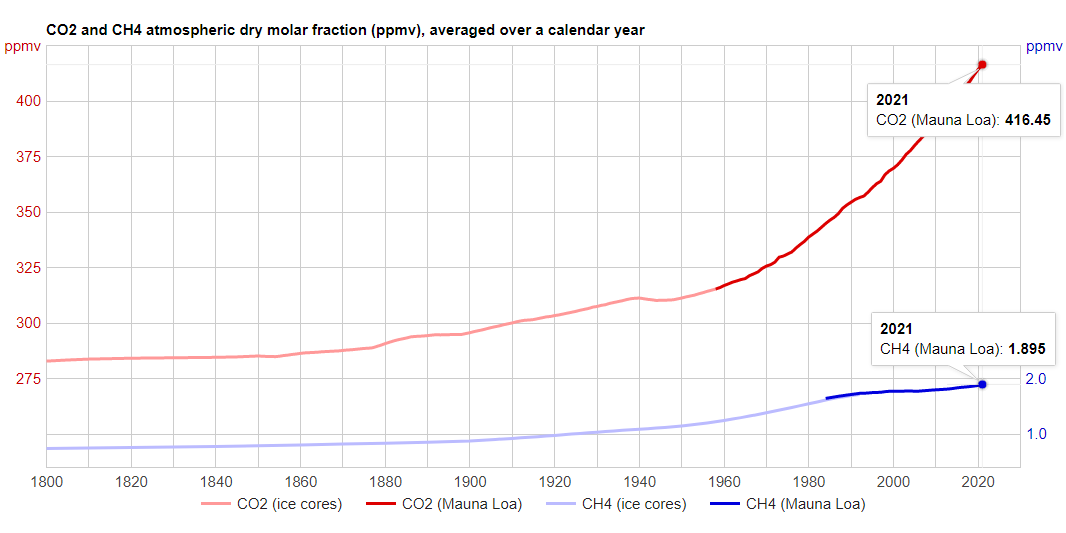Atmospheric Carbon Dioxide (CO2) and Methane (CH4) levels, 1800–present
Warning: javascript is disabled, so interactive features are unavailable (and the graph is out of date).

To see precise values, hover your mouse cursor over the red and blue graph traces. (However, all values are shown with about one more significant digit than is warranted by the precision of the measurements, and the ice core values are less accurate than the Mauna Loa measurements.)
The relative scaling of the CO2 and CH4 axes was chosen so that the relative visual magnitude of changes in the two traces would very roughly approximate the relative warming effect of changes in the levels of the two gases. Additional CH4 is variously estimated to have between 20x and 80x the warming effect of the same amount of additional CO2; we used 25:1 so that the grid lines would line up nicely in the graph (and it is also very close to the 26.5:1 figure from the first two rows of AR6 Table 8.A.1, p.731 [alt]), but 40:1 or 45:1 would have been more accurate. However, the absolute height of the CH4 trace in this graph, relative to the bottom of the graph, still greatly exaggerates its total warming affect, compared to CO2. ↑
1958-present CO2 data is from https://gml.noaa.gov/webdata/ccgg/trends/co2/co2_annmean_mlo.txt.
For monthly data see
https://gml.noaa.gov/webdata/ccgg/trends/co2/co2_mm_mlo.txt
(measurements at Mauna Loa
We also have individual graphs of carbon dioxide (CO2) and methane (CH4) levels.
SeaLevel.info
Last modified: 27-Jun-2025 (version 64)